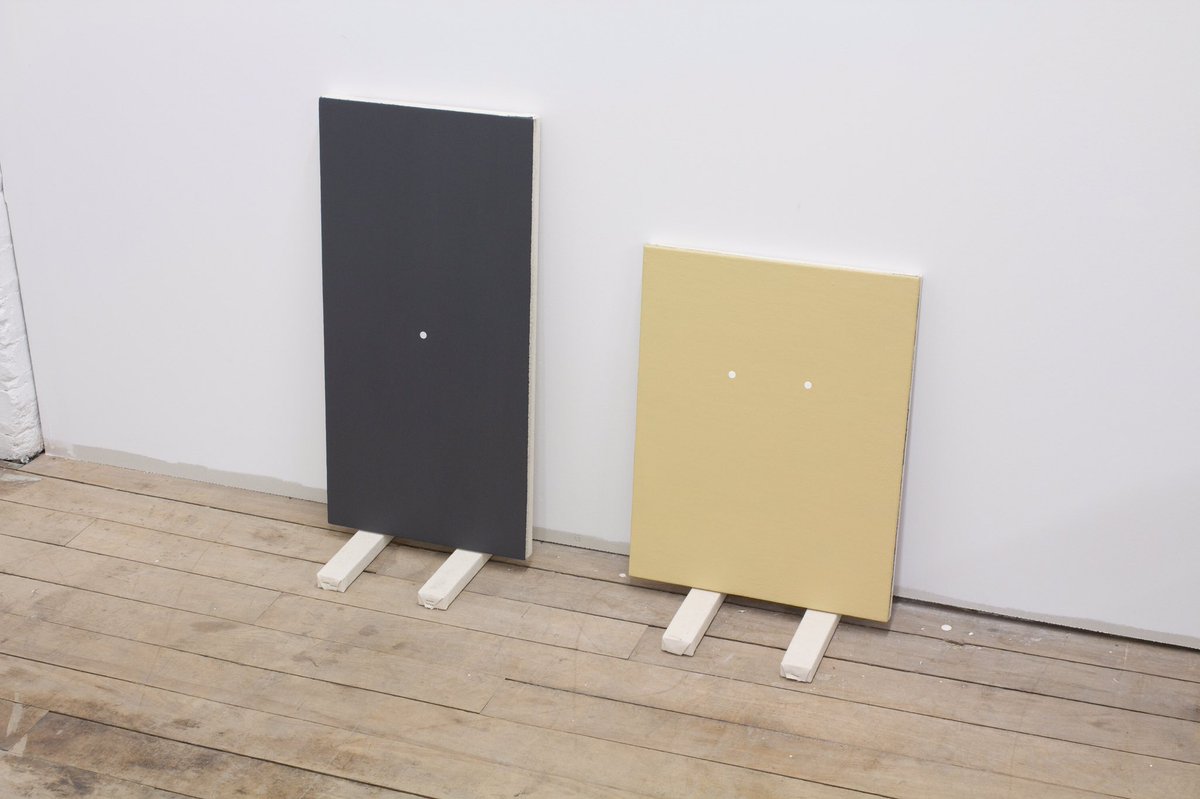
Montreal, Quebec
Every once in a while you have one of those meetings with someone through social media that makes you feel like it can be a tool to connect people who would possibly otherwise never meet, but should know each other. This is how I felt when I met Matthew Feyld. Though he lives in Montreal, and me in Los Angeles, we get to message each other about pigments, surfaces, brushes, color… you know, the stuff that only painters talk to each other about.
Because of his keen eye, and the depth and rigor with which he explores his subject matter, I was excited to talk to him about his studio practice.
I feel lucky he took a little time away from his studio to talk while he prepares for a handful of upcoming shows; a solo show opening February 1st at Sunday-S in Copenhagen, two group shows at Geukens & De Vil in Belgium on January 20th and 26th, and another solo show in Montreal at René Blouin opening January 26th.
I know you spend a lot of time preparing the surface, the paint, and your studio space for the act of painting. What do you think is happening for you during this process, before a brush touches the canvas?
I have a lot of rituals in and out of the studio. They help me sort out my thoughts and ideas, and hopefully allow these things to dissolve, so that I can focus on painting.
Surely this is an assumption based on your work, but I imagine your studio practice to be very disciplined and measured. Is this true? Tell me about your routine and how this might or might not inform your work.
I don’t have a specific time that I arrive in the studio, but the studio is my main priority. I try to be in there seven days a week, so that I can follow the continuity of what happened the day before. When I arrive I tidy up and put the brushes away that I left out to dry from the previous day. I fill several small jars with water and lay out my materials, then I spend a little time looking at the paintings before I start working.
While paint is drying I usually stretch canvas, mix paint and prepare the supports. This is one of my favourite activities.
I think that discipline is key to getting anywhere with anything. Especially anything that is of importance to you. What do you think having this kind of discipline has taught you or brought to your work?
I agree, discipline is very important. I don’t think that I could make the work that I make without having this kind of discipline to my studio practice. My works evolve slowly over many days, weeks, months. I need to be there every day, for many hours in order for this to happen.
 What are you searching for in your paintings?
What are you searching for in your paintings?In this hyper accelerated time that we are living in now, I cherish the introspective time and the slowness that my studio practice brings. The act of painting for me is a slow one.

What does time spent away from the studio look like? Are there activities outside of the studio that you see as an extension of what goes on in there?
I really enjoy going for long walks, and flipping through books at used book stores. I also try to see as much art as possible.
I know you see a lot of objects or scenes out in the world and on the street that mirror what your paintings look like. You post a lot of these photos on Instagram. When you take a photo how does that image either inspire or confirm what is happening in the studio?
It goes both ways; sometimes I make drawings, and then see a very similar situation out in the world, and sometimes I draw from the photographs that I take. Seeing these things when I’m out walking is a nice confirmation about what it is I’m doing.

What are the conversations you find yourself having the most in or out of your studio with other people about painting?
I don’t talk painting with very many people, but I guess it always comes back to nerdy conversations about materials. Paints, pigments, brushes, supports, that kind of thing. I could talk all day about stretcher bars.
What are you reading right now?
I’m looking forward to having a little more time in the coming months to finish the stack of unfinished books that I have scattered around the house. The books that I see here on my table are, The Air is Blue, by Hans Ulrich Obrist & Pedro Reyes, and The Man Who Mistook His Wife For a Hat, by Oliver Sacks.
Thank you Matthew!

matthewfeyld.tumblr.com
@matthewfeyld
Photos courtesy of Hunted Projects & Copenhagen Contemporary
12 / 31 / 2018